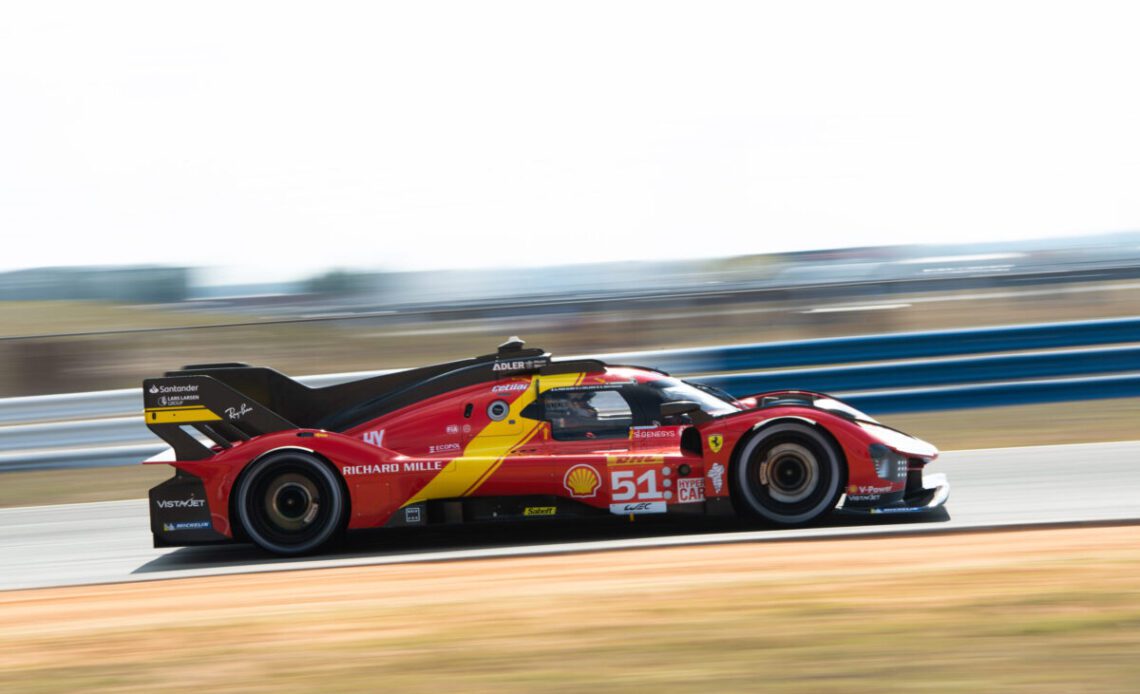‘We tried to design the car for a very wide range of tracks, considering we have to go to the US for the WEC. I think that as an engineer, what we can do is have a car concept and suspension that hurts the tyres the least. We are looking for consistency and, even though the tyres are facing aggressive asphalt, the wear [should be] less than our competitors.’
The longitudinal strakes over the mirrors, front wheel arches, nose and roof, are striking about the car. Ferrari says these are in place to help correct the car in high yaw angles, as strict regulations surround stability in the event of a spin. However, the large fin on the engine deck and the enormous rear wing end plates, in contrast to other cars such as the Peugeot, suggest these strakes have other functions. They will likely help the car on turn-in and in high-speed corners, such as the Porsche Curves at Le Mans. Rivals note that they, too, experimented with strakes over the front wheel arches for this reason and suggested they were more in place to help the airflow correlate to the underfloor.
Tyre thinking
The tyre regulations changed at the end of 2021, and cars homologated before the end of 2022 had the option of a narrow front tyre and wider rear to match the LMDh cars that will race in IMSA, or the same size tyre all round. By regulation, then, with the car not racing until 2022, Ferrari had to take the narrow front, wider rear combination. Michelin evolved the tyre with a higher bio content than previous versions and removed tyre warmers for the WEC. The idea is to increase the lap time penalty for taking on new tyres, encouraging teams to put more mileage on older tyres.
For teams to be prepared to do that, though, the tyre companies worked to come up with a different chemical formula to help heat the tyres quicker, particularly in cold temperatures such as the nighttime at Le Mans. The drop-off over a stint will also be higher. Either way, tyre management will be critical to overall performance in the coming years. The first step in the car’s development was to confirm the tyre in simulation. The first phase of track testing was to correlate what the team had found in the simulation with actual data and tune the simulator accordingly.
Cannizzo: ‘If you have tyres that you can develop, you can have a higher degree of freedom to play with. Now [with this regulation] you need to match your design to the existing tyres. One of the most important jobs, then, was to ensure…
Click Here to Read the Full Original Article at Racecar Engineering…

